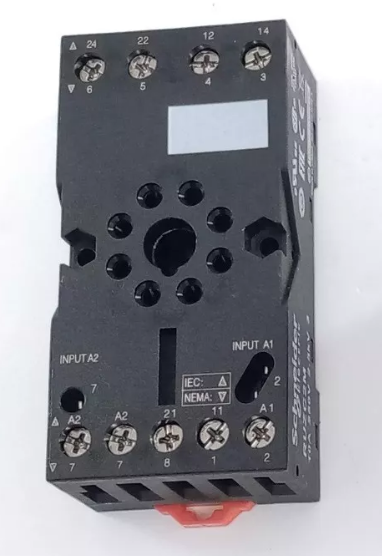An encapsulated relay is a device used for closing NO contacts or openning NC contacts. These NO or NC contacts can be used for auxiliar or power purposes.
On application of the encapsulated relays is for electric isolation between two circuits. One of these can be potentially dangerous (high voltage) while the other one could be safer for operators (low voltage).
Other applications for encapsulated relays are known, such as: interfacing between actutators and controlling devices, etc.
How does an encapsulated relay looks like?
Well it depends on the model you are referring to. For example you may find some like those sell by ABB,
 |
| Fig. 01 ABB encapsulated relays. |
Among the features that make these kind of relays we may list,
- different number of contacts NO/NC are available. You may have one contact only or four or more,
- there are options for soldering on pcb,
- other models are suitable for reduce space installation in control panels,
- other models are design to resist vibrations.
 |
| Fig. 02 Here is an image of an encapsulted relay showing the pins (bottom metal sticks) |
 |
| Fig. 03 Socket of an encapsulated relay. Notice that the terminals are numbered and are related to the pin and diagram of the encapsulated relay. These may change from one manufacturer to other. |
How does an encapsulated relay work?
 |
| Fig. 05 Energizing an encapsulated relay |
Other stuff of interest
- LE01 - AC and DC voltage measurement and continuity test
- LE 02 - Start and stop push button installation 24V DC
- Some examples of temperature instruments
- Minor losses - Formulas
- What is a process variable?
- What are the most important process variables?
- Time dependence of process variables
- A list of process variables
Ildebrando.



No comments:
Post a Comment